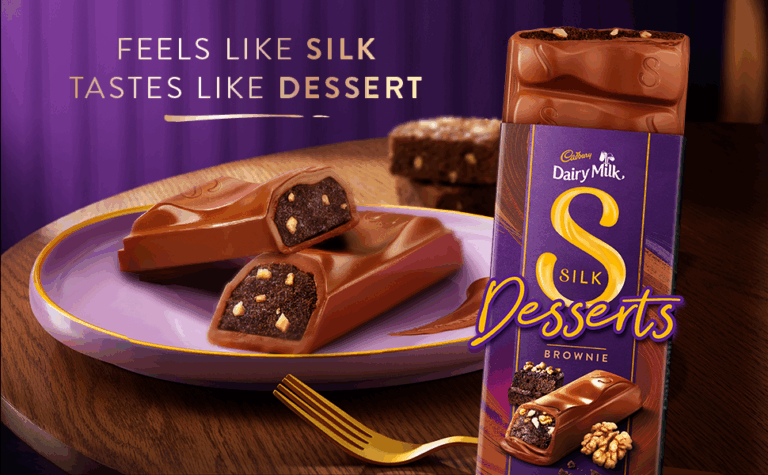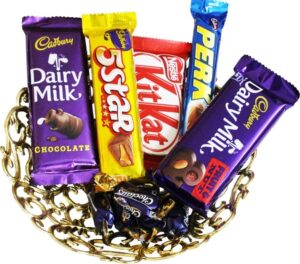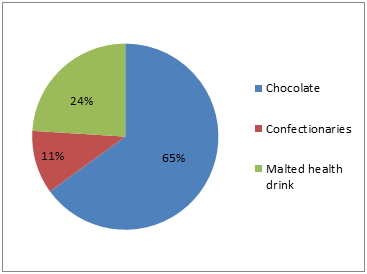Cadbury Case Study: Marketing Strategy, Challenges & Success in India
When we think of chocolate in India, the first name that pops into our minds is Cadbury. Cadbury has been more than just a chocolates brand. It has become an inseparable part of our celebration, relationships, and everyday joys. From the iconic “Asli Swad Zindagi Ka” campaign to the heartwarming “Kuch Meetha Ho jaaye” tagline. As we explore this Cadbury case study, it becomes clear how Cadbury has built an empire of emotions alongside its sweet treats.

Source: Google
Cadbury Dairy Milk was the chocolate that changed everything. It was creamy, tasty, and affordable, so families could enjoy it anytime not just on special occasions. After that, Cadbury kept bringing out more yummy options: 5 Star with its chewy bite, colorful Gems for kids, rich Bournville for dark chocolate lovers, crunchy Perk, the creamy Oreo bar, and the smooth, rich Silk bars. Today, Cadbury owns over 65% of the chocolate market in India. It’s clear Cadbury is truly India’s chocolate champion.
Cadbury was founded in 1824 in Birmingham, UK, by John Cadbury. Today, it operates under Mondelez International, a global snacking powerhouse. In India, Cadbury entered the market in 1948 and quickly became a household name.
Kickstart Your Digital Marketing Career
- Learn SEO, Google Ads, & Social Media.
- Anytime, Anywhere Learning.
- Going 70,000+ Growing Marketers.

Objective of the Cadbury Case Study
The purpose of this case study is to:
Analyze Cadbury’s marketing and branding strategies in India.
Understand how Cadbury built an emotional connection with Indian consumers.
Study the challenges Cadbury faced in the competitive FMCG landscape.
Extract key lessons for marketers and business students.
Research Approach
This case study is based on secondary research from advertising campaigns, Cadbury’s official reports, industry analysis, and market insights. The focus is on Cadbury’s Indian operations, marketing approach, and consumer perception.

Marketing Channels in Cadbury Case Study
Cadbury has always been more than just a chocolate brand – it’s an emotion that connects with people across generations. One of the biggest reasons behind its success is the smart use of multiple marketing channels that help the brand stay relevant, visible, and loved by millions.
1. Television & Print Advertising
From the iconic “Kuch Meetha Ho Jaaye” campaigns to emotional storytelling ads, Cadbury has consistently leveraged TV commercials and print ads to create a strong brand recall. Their ads are not just promotions, they are moments that people remember and share.

2. Digital & Social Media Marketing
In today’s digital age, Cadbury has made a strong presence on platforms like Instagram, YouTube, and Twitter. Through creative posts, influencer collaborations, and festive campaigns, the brand engages with younger audiences and builds conversations that go beyond products.
3. In-store & Retail Promotions
Cadbury ensures high visibility at supermarkets, retail stores, and even small local shops. Eye-catching displays, combo packs, and festive gift boxes make it easy for customers to pick Cadbury products during special occasions.
4. Sponsorships & Partnerships
The brand often collaborates with big events, sports tournaments, and entertainment shows. These partnerships help Cadbury reach wider audiences and associate the brand with celebration and joy.
5. Content Marketing & Storytelling
Cadbury doesn’t just sell chocolates; it sells moments of happiness. Whether it’s a touching ad film or a social media story, the brand uses emotional storytelling as a channel to deepen its connection with consumers.
6. Seasonal & Festive Marketing
Cadbury has mastered the art of connecting with cultural festivals in India. From Diwali gift hampers to Rakhi special packs, it uses festivals as a powerful marketing channel to position itself as a brand of happiness and togetherness.

Challenges Faced by Cadbury
1. Competition: Big names like Nestlé, Amul, and Ferrero Rocher, along with many local brands, turned the Indian chocolate market into a fierce battleground.
2. Health Awareness: Growing worries about high sugar levels are slowing down chocolate sales, especially among health-conscious shoppers.
3. 2003 Worm Controversy: In the Cadbury Case Study, one of the biggest challenges was the 2003 worm controversy Some Dairy Milk bars with worms sparked an outcry, forcing Cadbury to go into damage-control mode and rethink its quality checks.
4. Price Sensitivity: Cadbury’s premium Silk and Bournville bars are great, but not every shopper can splash out on something costing over a hundred rupees.
5. Counterfeit Products: Fake Dairy Milk bars are popping up in smaller towns, and even a few of those can tense up a whole market, suggesting a pressuring quality check.
Results & Outcomes
Brand Leadership: Cadbury holds over 65% share in India’s chocolate market.
Cultural Relevance: Chocolates became part of Indian festivals, celebrations, and traditions.
Consumer Trust Restored: Post-2003 campaigns rebuilt confidence in product quality.
Innovative Positioning: From being a sweet treat to an emotional gift, Cadbury redefined chocolate consumption in India.

Actions taken by Cadbury
Quality Assurance: After the 2003 crisis, Cadbury launched “Purity Sealed” packaging and ran trust-building campaigns with Amitabh Bachchan.
Premiumization: Launched Silk and Bournville for premium audiences.
Localization: Adapted marketing campaigns to Indian culture, festivals, and family emotions.
Corporate Social Responsibility: Supported small businesses and farmers through initiatives.
Lessons for Marketers
1. The Power of Storytelling
The Cadbury Case Study shows the Power of Storytelling- People connect with emotions more than features Cadbury’s ads proved how a simple story can turn chocolate into a part of personal moments and memories.
2. Blending with Local Culture
A big reason behind Cadbury’s success in India is its ability to mix with local traditions. By positioning chocolates as part of Diwali, Raksha Bandhan, and other festivals, the brand found its way into family celebrations.
3. Festivals as Business Boosters
Instead of treating festivals as just another sales season, Cadbury used them to create deeper meaning around gifting. This strategy not only improved sales but also made the brand a natural choice during special occasions.
4. Winning Back Trust
After facing challenges, Cadbury rebuilt its image through open communication and stronger quality checks. This teaches marketers that honesty during tough times can actually strengthen long-term trust.
5. Reaching Every Pocket
By offering chocolates at different price points, Cadbury made sure there was something for everyone—from a small treat to a premium gift box. This inclusivity widened its reach across all consumer groups.
Conclusion
Cadbury’s journey in India is a shining example of how an international brand can beautifully blend with local culture and traditions. From the iconic Dairy Milk ads that became part of family moments to modern digital-first campaigns, the brand has constantly evolved while staying close to people’s hearts.
For marketers, Cadbury success in India proves that great branding is not just about pushing products — it’s about building emotions, trust, and creating experiences that live on in people’s memories. Cadbury didn’t just sell chocolates; it became a part of India’s celebrations and everyday happiness.

Diploma Course
- Modules Included From Basic Course.
- Modules Included From Advance Course.
In Diploma Course Student have Option to opt one out of 3 specialisation, Which are as follows:
2 Months Unpaid Guranteed Internship With Tradiomedia.

Master's Course
- Modules Included From Basic Course.
- Modules Included From Advance Course.
In Master’s Course Student have 3 specialisation, Which are as follows:
2 Months Paid Guranteed Internship With Tradiomedia.



